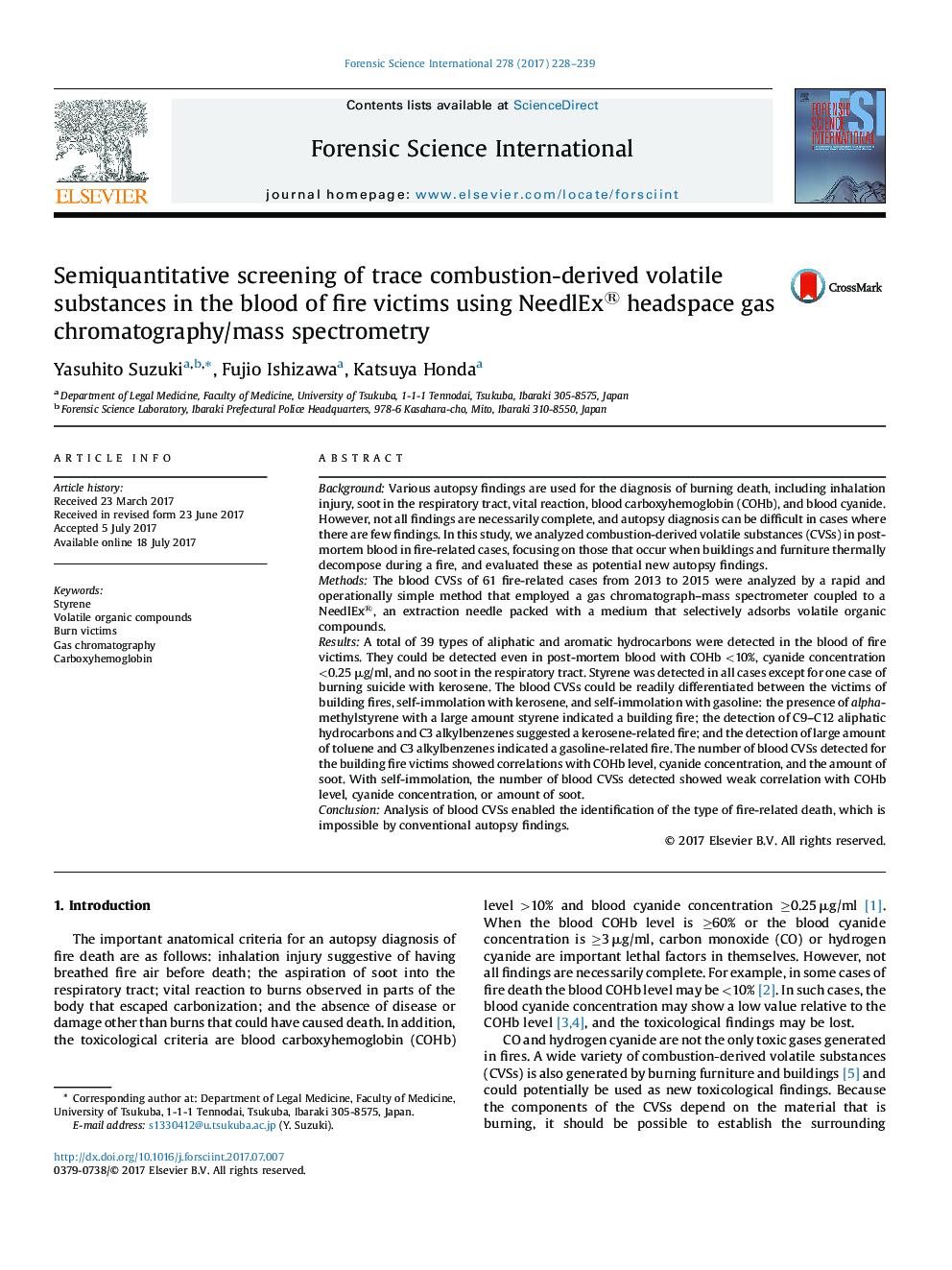| کد مقاله | کد نشریه | سال انتشار | مقاله انگلیسی | نسخه تمام متن |
|---|---|---|---|---|
| 6462217 | 1421972 | 2017 | 12 صفحه PDF | دانلود رایگان |

- Analysis of blood CVSs enabled the identification of the type of fire-related death.
- A total of 39 hydrocarbons were detected in the blood of fire victims.
- In the case of building fire, blood CVSs showed correlations with COHb level.
- With self-immolation, blood CVSs showed weak correlation with COHb level.
BackgroundVarious autopsy findings are used for the diagnosis of burning death, including inhalation injury, soot in the respiratory tract, vital reaction, blood carboxyhemoglobin (COHb), and blood cyanide. However, not all findings are necessarily complete, and autopsy diagnosis can be difficult in cases where there are few findings. In this study, we analyzed combustion-derived volatile substances (CVSs) in post-mortem blood in fire-related cases, focusing on those that occur when buildings and furniture thermally decompose during a fire, and evaluated these as potential new autopsy findings.MethodsThe blood CVSs of 61 fire-related cases from 2013 to 2015 were analyzed by a rapid and operationally simple method that employed a gas chromatograph-mass spectrometer coupled to a NeedlEx®, an extraction needle packed with a medium that selectively adsorbs volatile organic compounds.ResultsA total of 39 types of aliphatic and aromatic hydrocarbons were detected in the blood of fire victims. They could be detected even in post-mortem blood with COHb <10%, cyanide concentration <0.25 μg/ml, and no soot in the respiratory tract. Styrene was detected in all cases except for one case of burning suicide with kerosene. The blood CVSs could be readily differentiated between the victims of building fires, self-immolation with kerosene, and self-immolation with gasoline: the presence of alpha-methylstyrene with a large amount styrene indicated a building fire; the detection of C9-C12 aliphatic hydrocarbons and C3 alkylbenzenes suggested a kerosene-related fire; and the detection of large amount of toluene and C3 alkylbenzenes indicated a gasoline-related fire. The number of blood CVSs detected for the building fire victims showed correlations with COHb level, cyanide concentration, and the amount of soot. With self-immolation, the number of blood CVSs detected showed weak correlation with COHb level, cyanide concentration, or amount of soot.ConclusionAnalysis of blood CVSs enabled the identification of the type of fire-related death, which is impossible by conventional autopsy findings.
Journal: Forensic Science International - Volume 278, September 2017, Pages 228-239